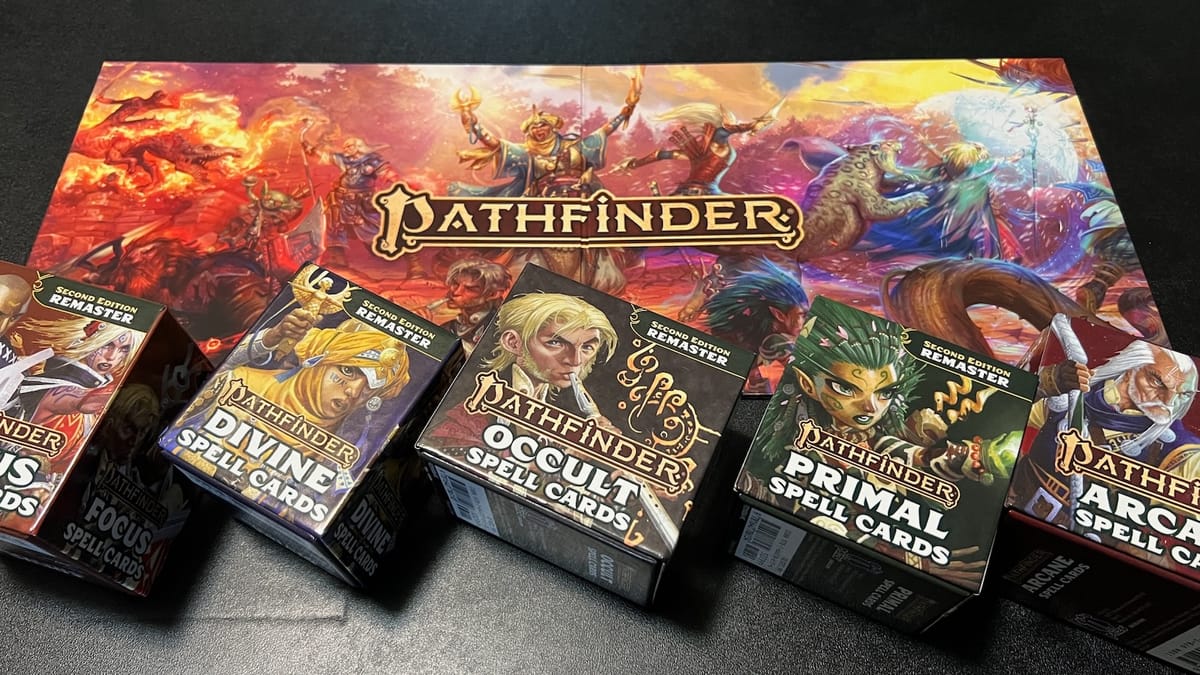
One thing that Paizo has done well is release great accessories for different players. With the recent remaster of their second edition of Pathfinder, some of their accessories needed updating for the new edition. We had a chance to check out the GM Screen and some of the new Spell Decks.
Gamemaster Screen
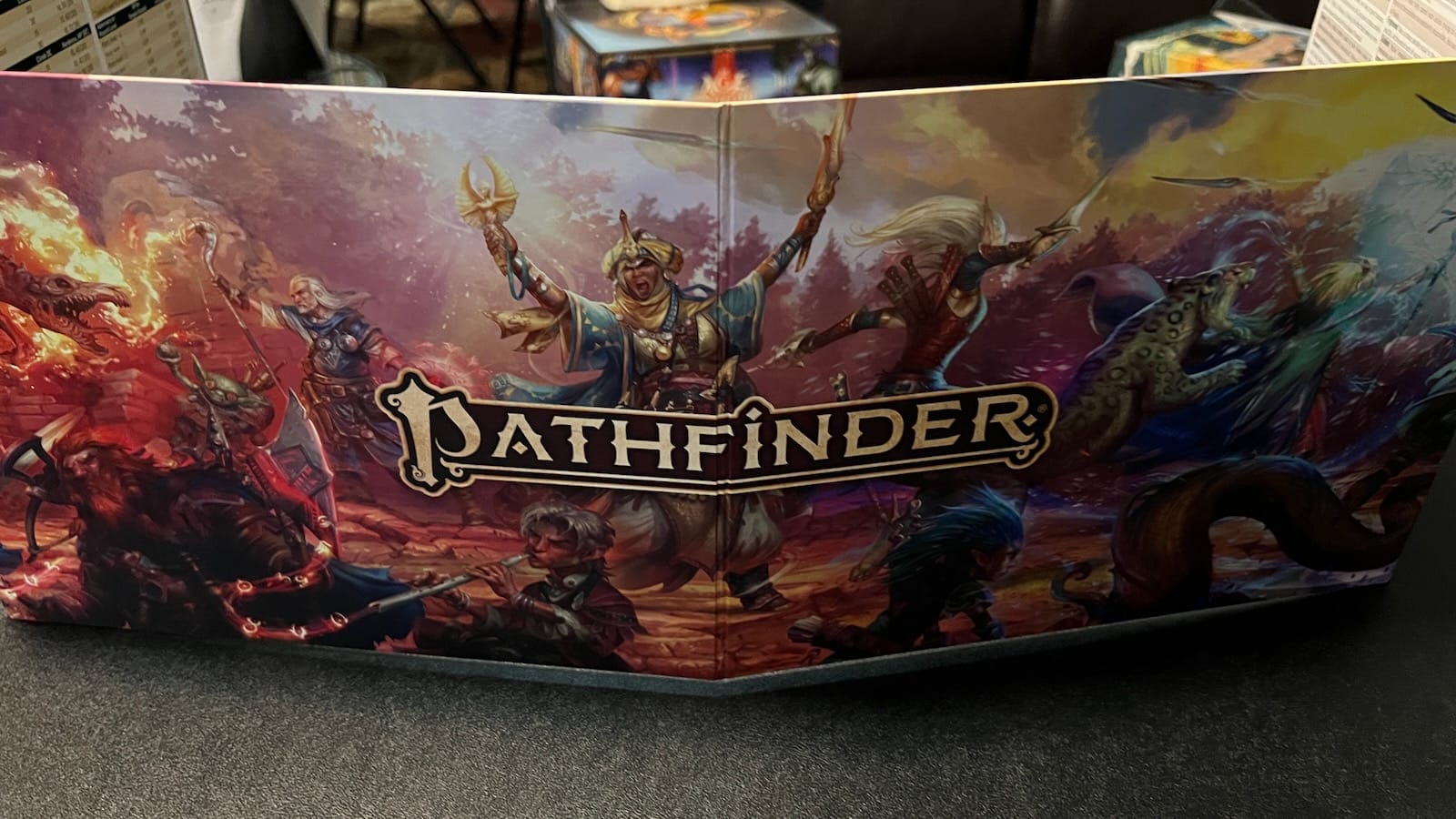
Featuring the artwork of Mirco Paganessi on the side facing the players, the Pathfinder Gamemaster Screen sets the tone of the session from the time it hits the table. The players get to feast on an epic battle featuring the Pathfinder Iconic Characters as they battle ferocious beasts and undead creatures attacking them on all sides.
Of course the real meat of the board is featured on the side facing the GM and has all the things needed to facilitate most of the circumstances the players will encounter while also giving ample room for the game master to work. Each section of information is clearly labeled and also features the source book and page number to reference for further information.
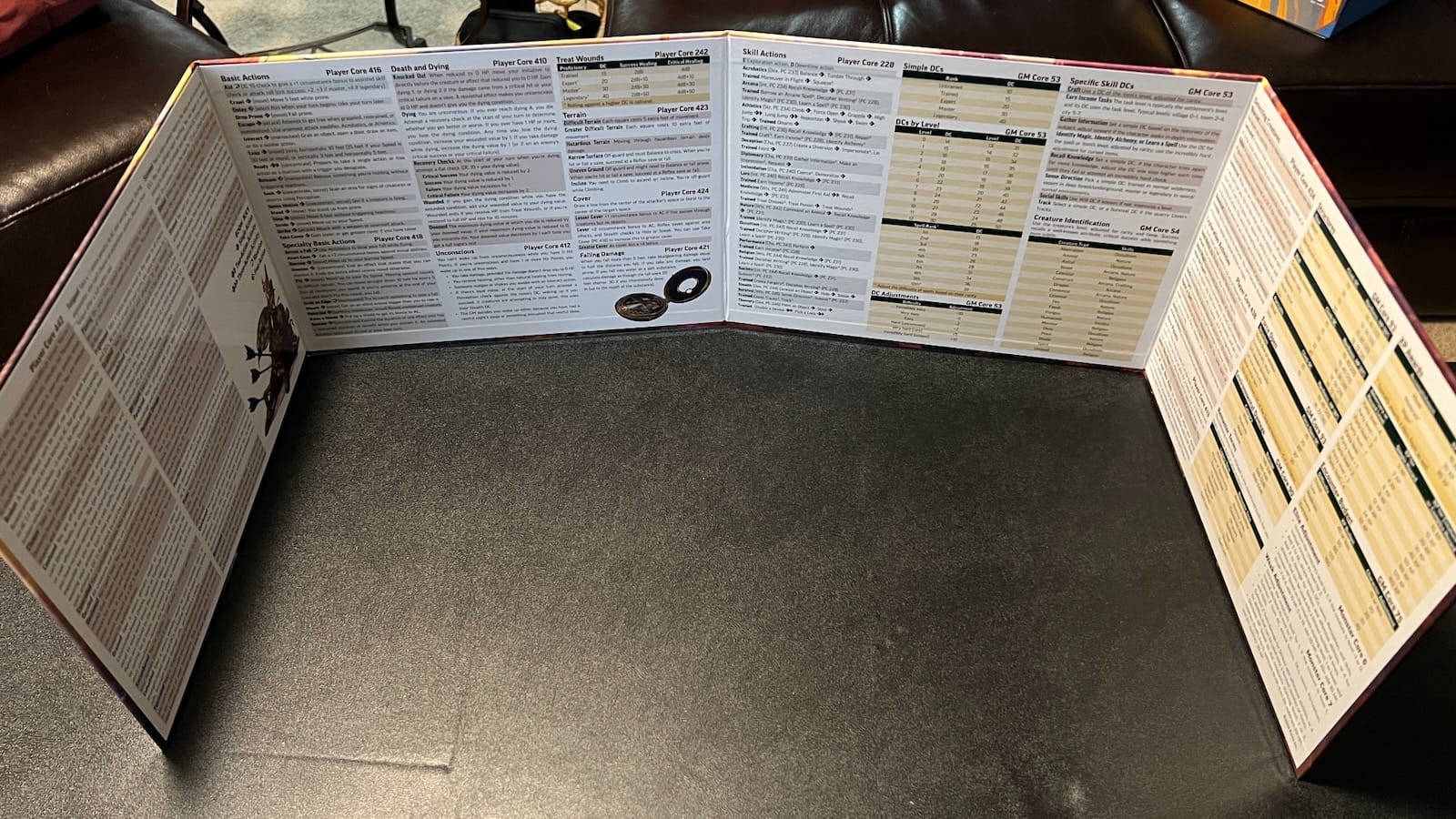
The left side panel is devoted to conditions a character might receive through their adventures. Each entry explains the effects of the conditions and any ongoing maladies the character might face, as well as instructions on how to get rid of the condition. Floating above the image of a punctured goblin is an icon reference relating to character turns. The rightmost panel features information used, for the most part, outside of encounters or skirmishes. This includes exploration activities, rules for hero points, interactions with structures and the environment, and rules for handing out experience points. There is also a handy table of changes from the legacy content to the newly remastered content for players navigating the updated game system.
The two center panels feature the most important information for a GM. Starting at left center, a list of basic character actions is featured so that the GM can encourage suggestions in different situations. The next column features all the rules needed for players who fall unconscious, or even die, during encounters with the enemy. The last column features a table for the “treat wounds” action and different ways players can move over, fall from, and use terrain and environmental objects as cover. The right center panel features actions players can take on their turns sorted by skill and also gives page references for each. The biggest section on this panel deals with Difficulty Class (DC) checks and how the GM can modify different situations depending on character ranks, levels, and other in-game factors.
Pathfinder 2E Remastered GM Screen
Excellent
This GM Screen is a workhorse. It answers 95% of the questions that have come up in campaigns surrounding general rules. How does falling unconscious work? What's the DC if I’m an expert in a skill? All the basic information is right at your fingertips. This is a must for any DM running a Pathfinder 2E Remaster game.
Pros
- Gorgeous artwork graces the player side of the screen
- Intuitive information for the GM on their side
- Laid out with most used information in the center
Cons
- Could use some accessories for initiative tracking built in
- I’m not currently using it, where can I find a game?
This review is based on a copy provided by the reviewer.
Spell Decks
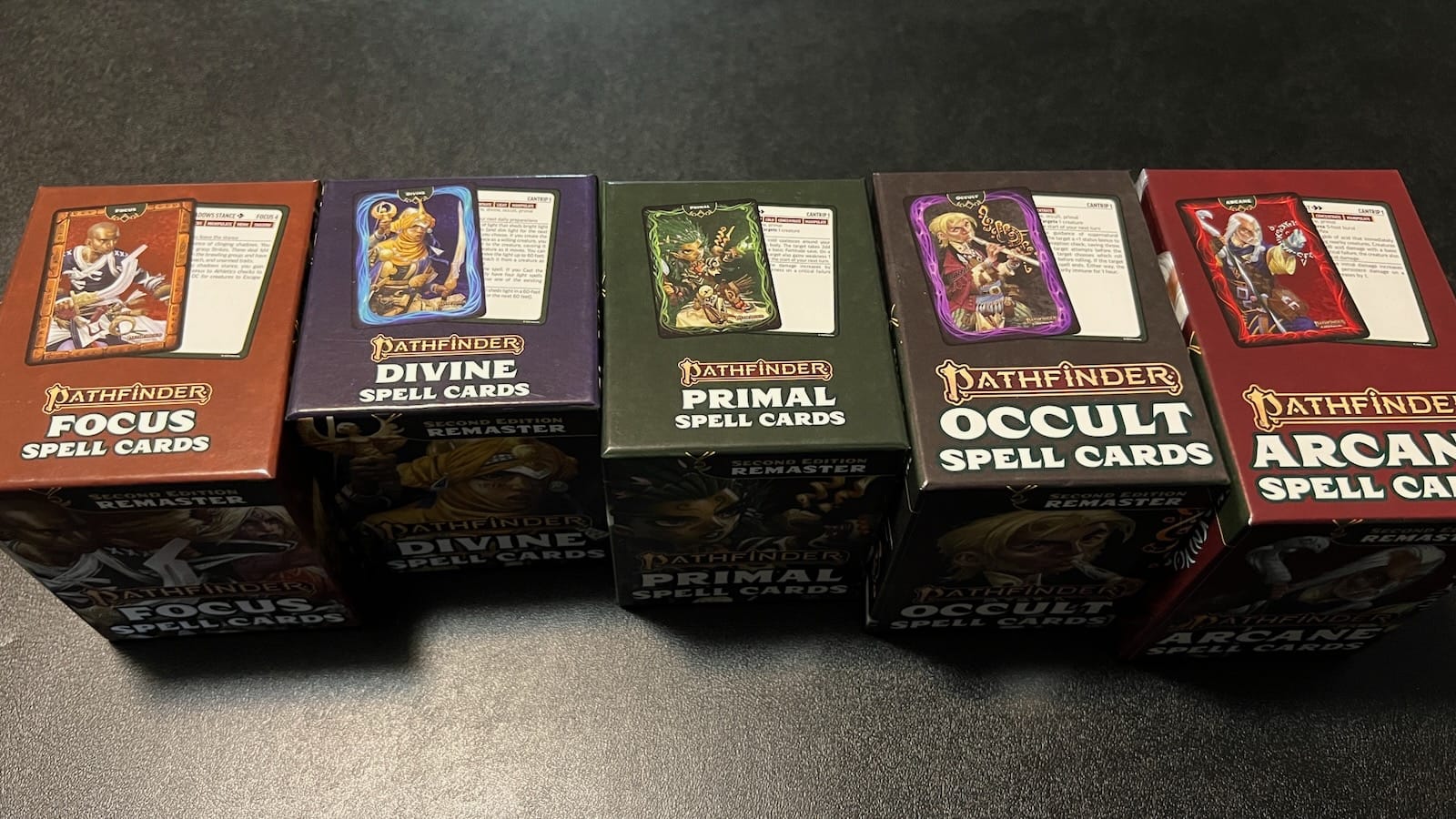
The spell decks are a fantastic way to organize and interchange your spells during a campaign. Each deck features different artwork associated with some of Pathfinder’s Iconic characters.
Magic in Pathfinder 2E is broken down into four magical traditions:
- Arcane
- Divine
- Occult
- Primal
Spells will also affect different physical and metaphysical essences such as matter, spirit, mind, and life, with different magical traditions able to manipulate different essences. Each of the four magical traditions has its own deck of cantrips and spells, which are also found in the Player Core and Player Core 2 sourcebooks. Each deck is organized alphabetically by spell type and level, starting with Cantrips and moving back into leveled spells. There is also a deck for Focus spells that caters to each individual class. This deck is also organized by the class associated with the Focus Spell and also features different art depending on the class.
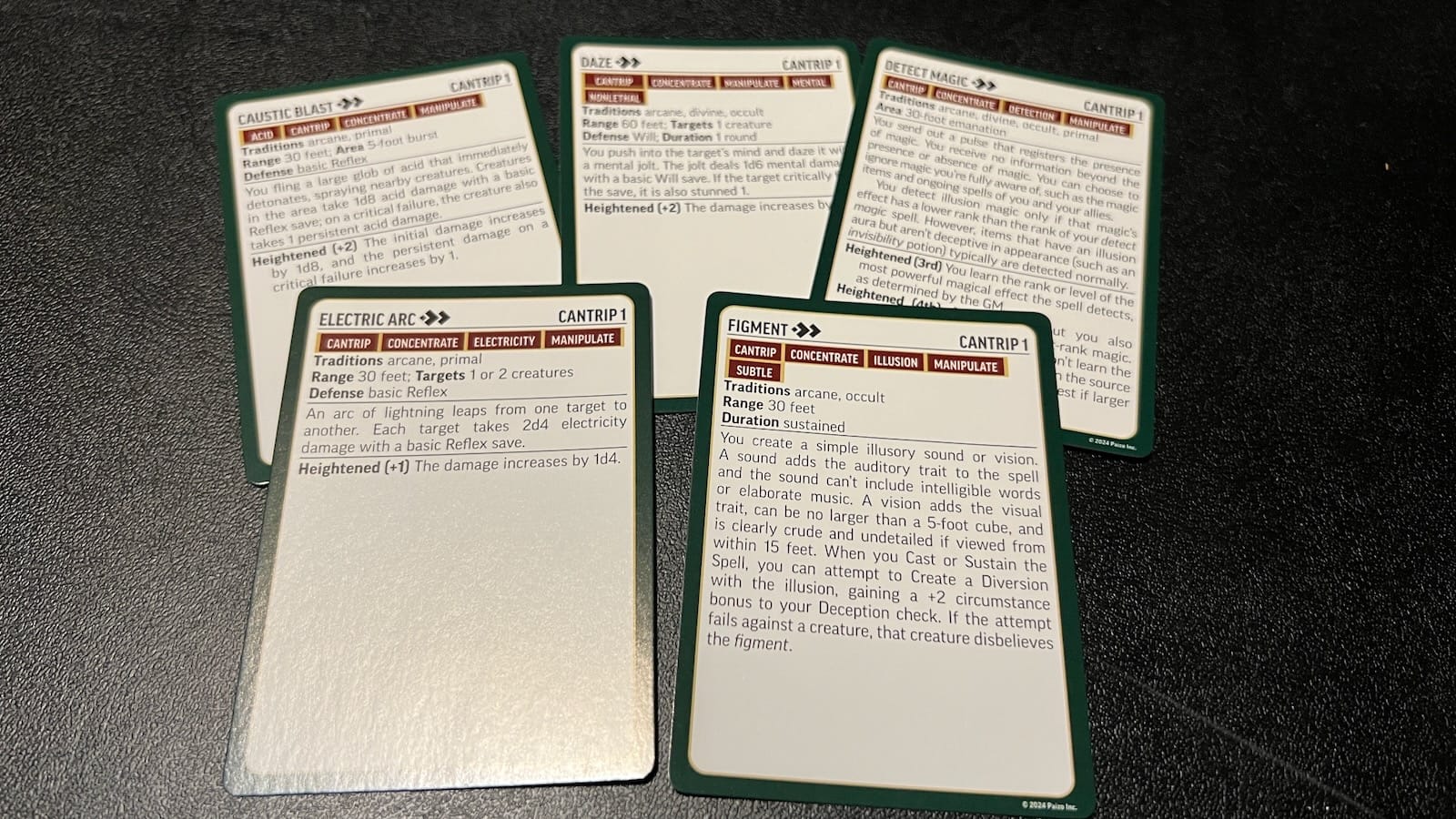
Each spell card outlines its name, its action cost, and the type/level of the spell at the top. It then goes on to outline any traits the spell may have, using the same trait blocks from the source manuals. Included with the traits are the magical traditions, range/targets/area of the spell’s effects, duration if applicable, and any defensive saving throws that can be used to mitigate the spell. Finally, the card will outline the effects of the spell using as much text from the source book as possible, sometimes having to use both sides of the card. This also includes any information about heightened effects. Some cards will refer to the page and source book for the spell's entry if there’s too much spell text to fit on the cards.
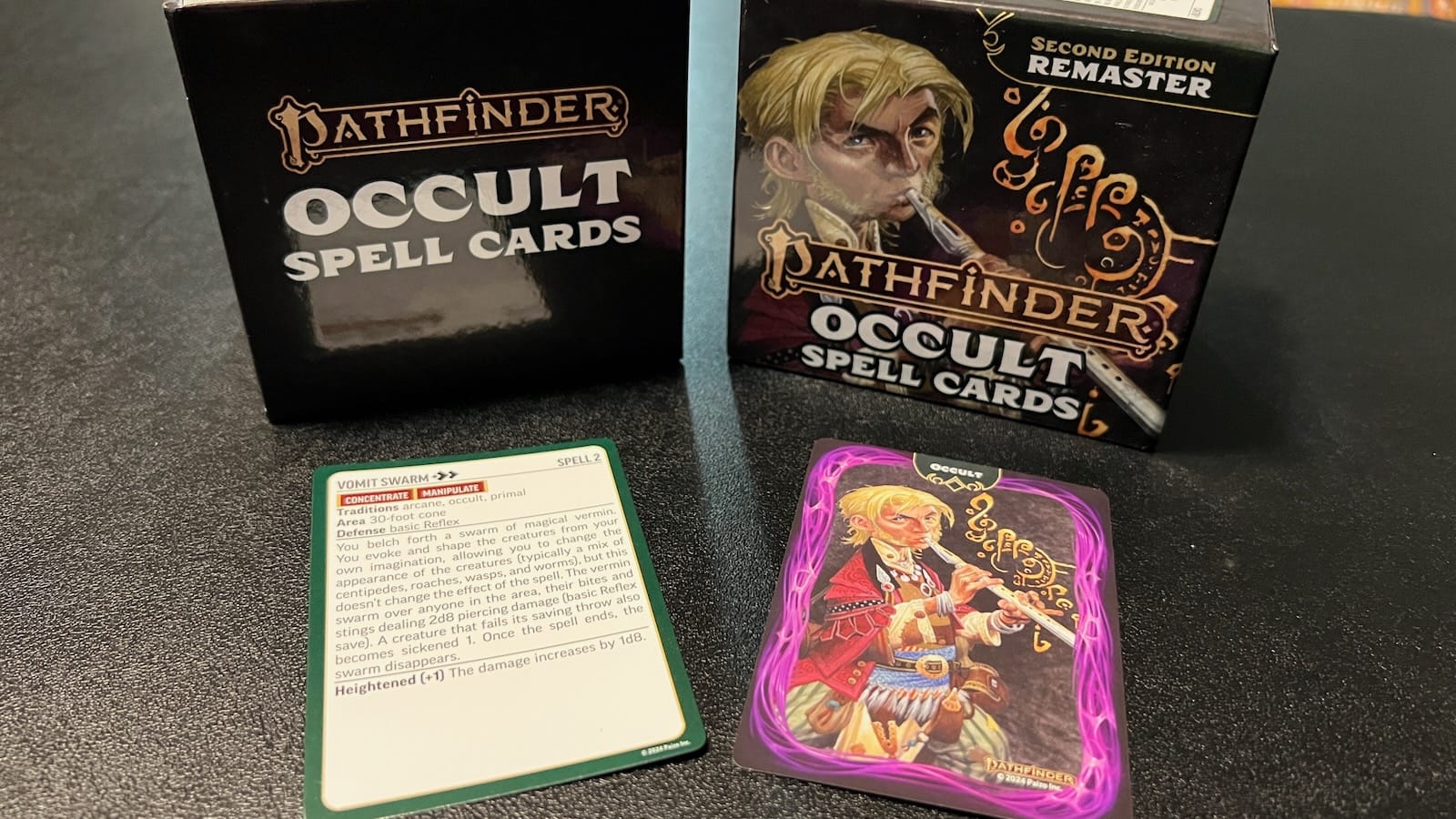
For those choosing the more traditional analog approach to tabletop gaming, the spell cards are a fantastic way to stay organized during a campaign without having to write out each individual spell. The cards also make it easier to swap out the active spells prepared each day. In my current group, one of our spellcasters keeps a 3-ring binder of all of his character sheets and spell cards for easy reference during the game. During a session, he pulls out his prepared spells and places them in front of him. The organization of the boxes makes it easy to find a spell quickly, and the inclusion of reference items makes it easy to find in the source book if needed. Spells with multiple traditions also have unique cards for each spell deck.
Pathfinder 2E Remastered Spell Cards
Excellent
These cards are a great addition to anyone who’s trying to organize their spells during a Pathfinder campaign. The filing system makes it easy to locate the spells you need.
Pros
- Mobile versions of spells taken directly from source books
- Great organization
Cons
- Some spells still need the sourcebook due to length
- Focus spell deck not as easy to navigate
This review is based on a retail copy provided by publisher.
